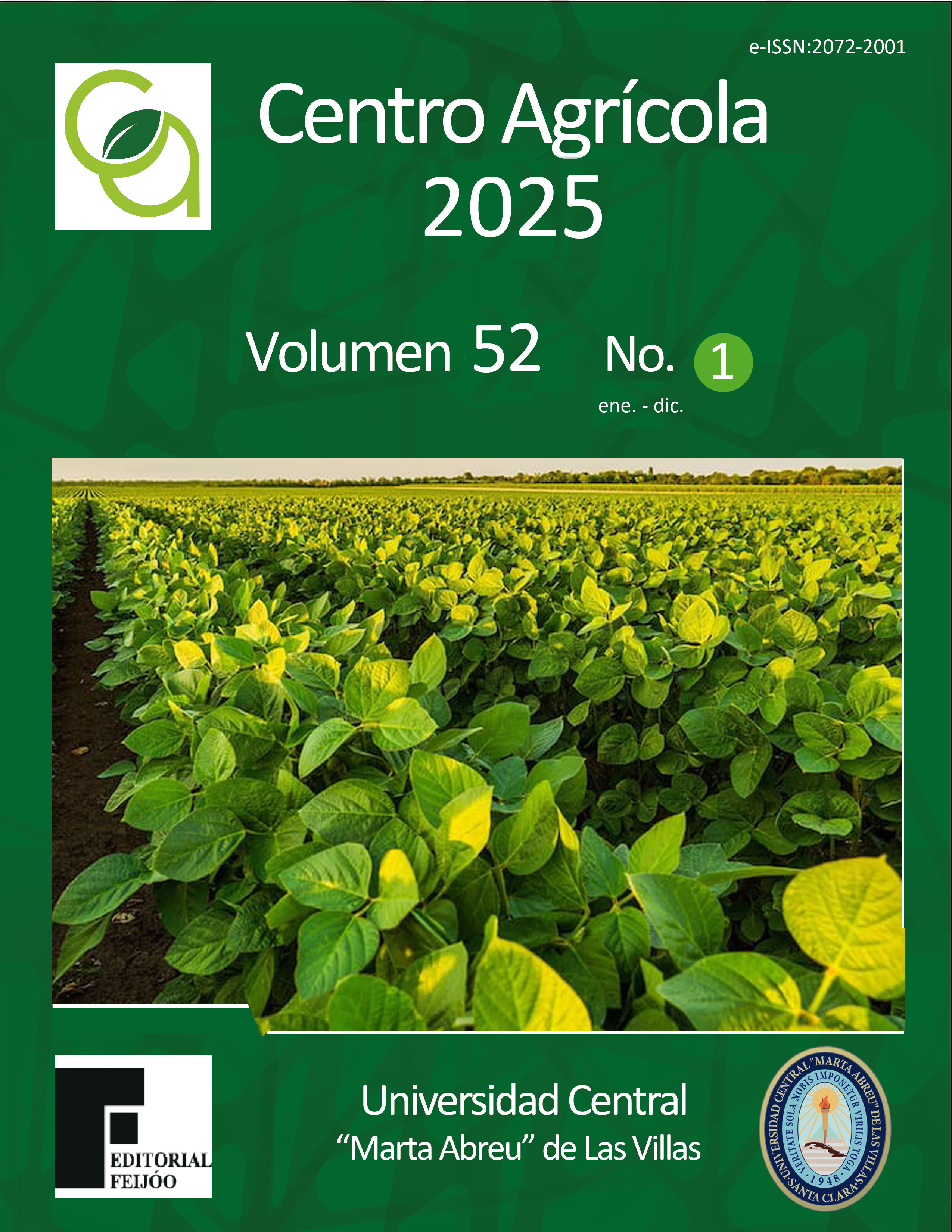CF: cag082222366
ARTÍCULO DE INVESTIGACIÓN
Fluctuación poblacional de trips asociados al frijol común (Phaseolus vulgaris L.) y su control mediante hongos entomopatógenos
Population fluctuation of thrips associated with common bean (Phaseolus vulgaris L.) and their control by entomopathogenic fungi
Chabeli de la Caridad Abreu Lemes1
Orelvis Portal Villafaña2,3
Yordanys Ramos Goanzález1*
1 Departamento de Agronomía, Universidad Central “Marta Abreu” de Las Villas, carretera a Camajuaní km 5.5, Santa Clara 54830, Cuba
2 Departamento de Biología, Universidad Central “Marta Abreu” de Las Villas, carretera a Camajuaní km 5.5, Santa Clara 54830, Cuba
3 Centro de Investigaciones Agropecuarias, Universidad Central “Marta Abreu” de Las Villas, carretera a Camajuaní km 5.5, Santa Clara 54830, Cuba
*Correspondencia: Esta dirección de correo electrónico está protegida contra spambots. Usted necesita tener Javascript activado para poder verla.
RESUMEN
El complejo de trips (Thysanoptera: Thripidae) constituye uno de los grupos de insectos plaga más perjudiciales que inciden sobre Phaseolus vulgaris en Cuba. Con el objetivo de determinar la fluctuación poblacional del complejo de trips asociados a P. vulgaris y su control mediante hongos entomopatógenos se realizó un estudio en la finca San José, perteneciente al municipio de Santa Clara, Cuba, durante los meses de octubre a abril en las campañas de siembra 2018-2019 y 2019-2020. Durante la primera campaña se registró la presencia de Thrips palmi en la etapa fenológica BBCH 21 que realizó su pico poblacional al comienzo de la floración con el 46,61 % de los insectos cuantificados. Aunque con menor incidencia, también se registró la aparición de Thrips tabaci con dos individuos durante todo el ciclo del cultivo. En la segunda campaña, T. palmi hizo su pico poblacional con la aparición de los primeros botones florales y apareció en la fase BBCH 28 la especie Megalurothrips usitatus, que paulatinamente alcanzó su máximo nivel poblacional al inicio de la floración con un 37,1 % de insectos cuantificados. Se demostró la efectividad de Beauveria bassiana Bb-18 sobre M. usitatus y T. palmi con una mortalidad de 73 y 100 %, respectivamente, mientras que Metarhizium anisopliae Ma-30 causó una mortalidad de 69 y 90 %. El conocimiento de la fluctuación poblacional de los trips y de la efectividad de B. bassiana y M. anisopliae para su control son elementos de interés para el establecimiento de un manejo integrado de trips en Cuba.
ABSTRACT
The thrips complex (Thysanoptera: Thripidae) is one of the most damaging insect pest groups affecting Phaseolus vulgaris in Cuba. With the objective of determining the population fluctuation of the thrips complex associated with P. vulgaris and its control by entomopathogenic fungi, a study was carried out at the San José farm, belonging to the municipality of Santa Clara, Cuba, during the months of October to April in the 2018-2019 and 2019-2020 planting seasons. During the first campaign, the presence of Thrips palmi was recorded in the phenological stage BBCH 21, which realized its population peak at the beginning of flowering with 46.61 % of the insects quantified. Although with lower incidence, the occurrence of Thrips tabaci was also recorded with two individuals during the entire crop cycle. In the second season, T. palmi made its population peak with the appearance of the first flower buds and the species Megalurothrips usitatus appeared in the BBCH 28 phase, which gradually reached its maximum population level at the beginning of flowering with 37.1 % of the insects quantified. The effectiveness of Beauveria bassiana Bb-18 on M. usitatus and T. palmi was demonstrated with 73 and 100 % mortality, respectively, while Metarhizium anisopliae Ma-30 caused 69 and 90 % mortality. Knowledge of the population fluctuation of thrips and the effectiveness of B. bassiana and M. anisopliae for their control are elements of interest for the establishment of an integrated management of thrips in Cuba.



